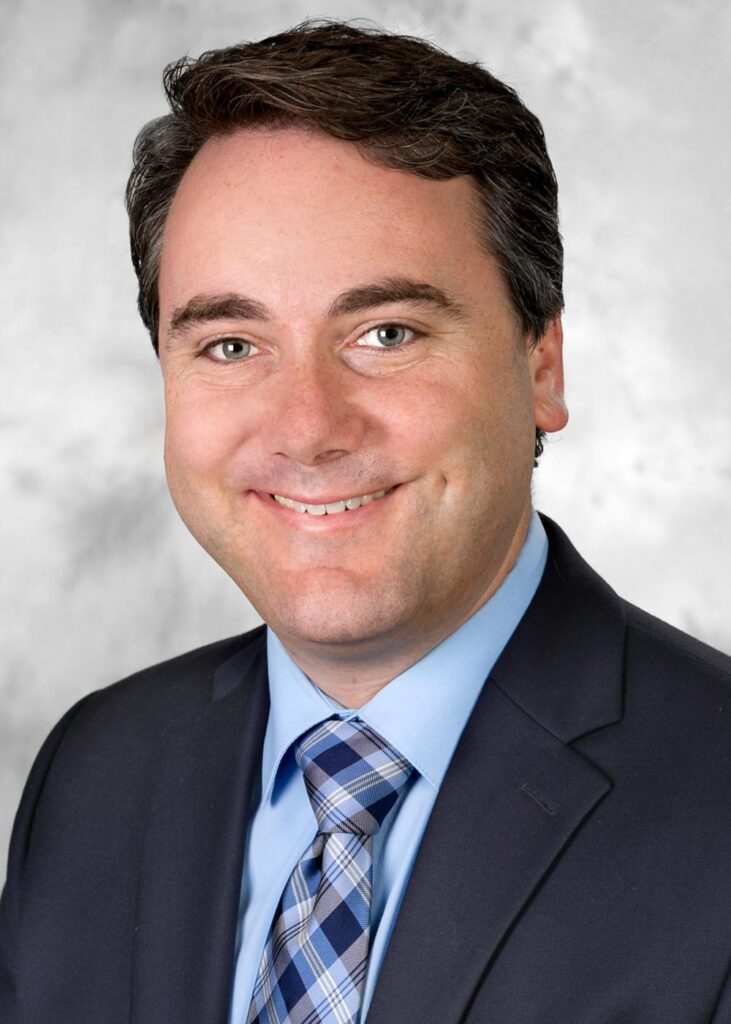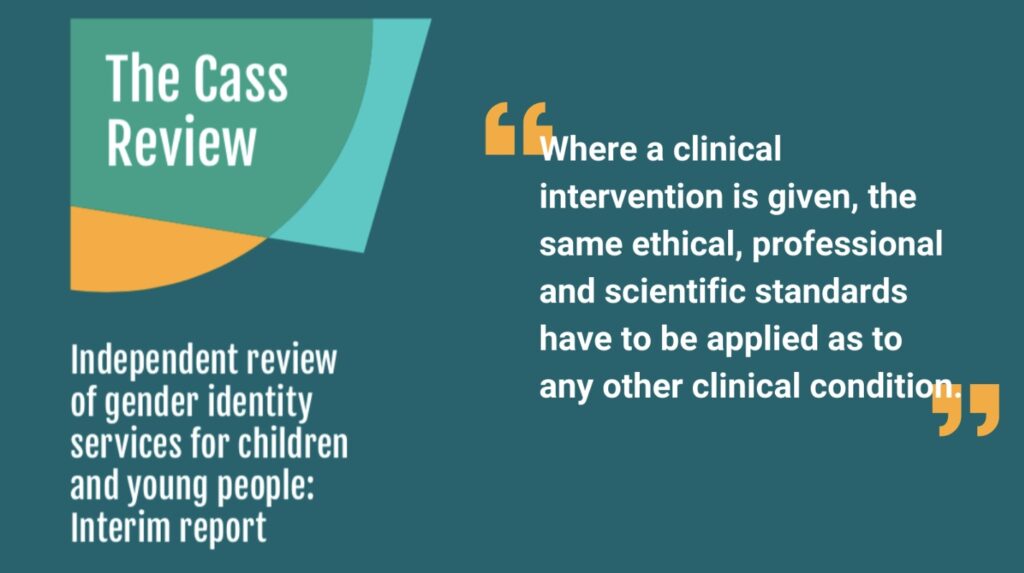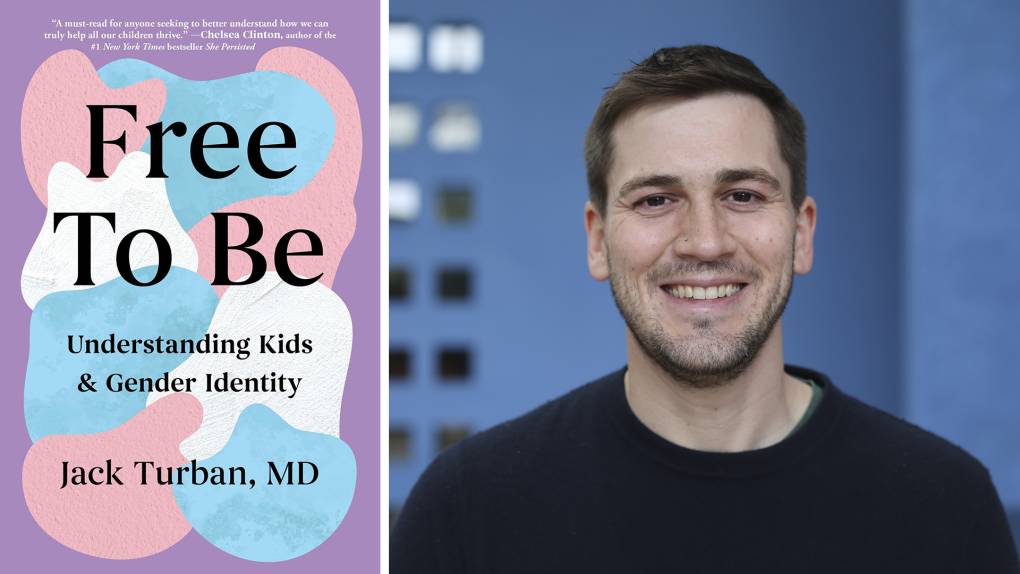New Evidence Challenges Institutionalized Belief That Transgender Teens Become Transgender Adults, Undermining Core Defense of Medical Gender Transitions for Minors
A pair of analyses of insurance-claims data each found that the majority of youths diagnosed with gender-related distress saw that diagnosis vanish from their medical chart within six years.

As the question of the constitutionality of banning pediatric gender-transition treatment barrels toward a showdown at the Supreme Court, a parallel philosophical debate over the stability of transgender identity in young people is coursing throughout the global court of medicine and academia — with no end in sight.
The prevailing view among leaders at American pediatric gender clinics holds that if an adolescent experiences persistent gender dysphoria — meaning distress due to a conflict between their biological sex and their gender identity — this will likely remain a lifelong condition. Transgender teens typically become transgender adults, the orthodoxy holds.
A substantial bloc of skeptics, though, including the lead author of Britain’s recent landmark Cass Review of pediatric gender medicine, argue that the existing science and data are insufficient to back this presumption. The ability of specialists to predict the future of youths with gender dysphoria, such critics claim, is compromised by a woeful lack of long-term follow-up data from the few available studies that follow gender-dysphoric youths over time.

Yet the doctors who dominate this insular medical field in America insist there is no need to even assess the true gender identity of any gender-distressed child who comes into their clinic.
What the child says goes.
Hanging in the balance of this intellectual battle are hundreds of thousands of American tweens and teenagers who are distressed — often deeply so — about their gender. Many of them seek hormonal, and in some cases even surgical, treatments to change, in some cases irreversibly, their secondary sexual characteristics.
Now, a pair of new analyses of medical-records data are challenging the orthodoxy on the permanence of adolescent gender dysphoria. German and American investigators found that the majority of gender dysphoria-related diagnoses, including so-called gender incongruence, recorded in a minor or young adult’s medical chart were gone within within five or six years.
Thomas D. Steensma, a health psychologist at Amsterdam UMC in the Netherlands and a leading pediatric gender medicine researcher, tells the Sun that identity exploration is a central, and perhaps the defining, quality of adolescence. “What we can conclude from these analyses,” he said of the new medical-claims investigations, “is that the prevalence of gender incongruence-related diagnoses has increased over the years; that the diagnosis does not persist in all people diagnosed; and that gender identity is still in development in children and minors.”
Delicate ethics guided by a critical question
The surging population of young people with gender dysphoria today is starkly different from their counterparts who came of age a generation ago and on whom much of the pediatric gender-transition treatment model remains based. Today’s gender-dysphoric youths have a particularly high rate of other psychiatric diagnoses and autism and are much more likely to be natal girls who only began to suffer from gender-related distress in adolescence.

The critical question of whether an adolescent’s gender-related distress is expected to persist into adulthood lies at the heart of the fierce, and fiercely politicized, national debate about whether minors who believe they are trangender should undergo gender-transition treatment with puberty blockers and cross-sex hormones.
The belief that youth gender dysphoria is permanent is likely behind a bold argument recently made by the World Professional Association for Transgender Health. Wpath is an influential, largely U.S.-based medical activist group that publishes widely followed care and treatment guidelines for trans persons. The organization stated in April that the majority of trans-identified youths would be best served by a medical transition.
The Williams Institute at the UCLA School of Law estimates that 300,000, or 1.4 percent, of Americans between 13 years and 17 years old identify as transgender. So the implication of Wpath’s argument is that at least 150,000 teenage minors, or one in 145, should be taking gender-transition drugs in any given year, with 30,000 or more such young medicated people hitting 18 and entering adulthood annually.
The ethics of beginning minors on what is typically meant to be lifelong hormonal treatment are controversial. Such powerful drugs pose the risk of rendering young people infertile and burdening them with permanent sexual dysfunction. And a half-dozen systematic literature reviews — the gold standard of scientific evidence — have found that the use of such medications to treat pediatric gender dysphoria is supported by weak and largely inconclusive research.

Vocal supporters of broad pediatric access to such medical interventions, such as the Lgbtq nonprofits Human Rights Campaign and GLAAD and the ACLU, frequently seek to tip the ethical balance by claiming that gender-transition treatment is “life saving” for adolescents. The only study ever to assess the veracity of this oft-repeated claim — a paper that was published in February to considerable pushback and scrutiny from the pediatric gender medicine field — found that such treatment was not independently associated with a statistically significant difference in the suicide death rate among young people.
All these complex ethical considerations notwithstanding, a widely influential 2018 policy statement from the American Academy of Pediatrics on what’s known as the gender-affirming care method for trans-identified minors instructs care providers to show deference to the child’s self-concept and preferences. These can include a medical gender transition.
The AAP policy statement goes so far as to assert that “research substantiates that children who are prepubertal and assert an identity of TDG”—meaning transgender or what’s known as gender diverse — “know their gender as clearly and as consistently as their developmentally equivalent peers” whose sex and gender identity are aligned.
Dr. Robert Garofalo, director of the gender, sexuality and HIV prevention center at Lurie Children’s Hospital of Chicago, was a contributor to the AAP’s policy statement and practices what the organization preaches. He said in a widely viewed — and criticized — video interview that youths typically come into his clinic “knowing exactly what they want.”
Anxious parents, he said, will sometimes assume the clinic’s role is to assess whether their child “is really trans.” At that point, he said with a self-assured grin, “I’ll turn to the child and be like, ‘Yeah, so what gender identity do you have?’”
Dr. Garofalo said he re-orients these parents’ expectations by explaining to them the reality of what transpires — or does not transpire — after a child seeking puberty blockers sets foot in a typical pediatric gender clinic. He tells the parents: “There’s no form, there’s no scale, there’s no psychological battery of tests that needs to be done” to assess the child’s true gender identity.

Psychologist Diane Ehrensaft and psychiatrist Jack Turban are both professors at the University of California, San Francisco, and are prominent figures in the pediatric gender-clinic field. In April, they published a paper in the Journal of the American Academy of Child & Adolescent Psychiatry outlining the major facets of the Wpath-recommended assessments of pediatric patients who seek gender-transition treatment. They echoed Dr. Garofalo by instructing care providers to communicate to adolescents “that the goal is not to determine whether patient ‘is really transgender’.”
Only vaguely alluding to what’s known as desisting or detransitioning —meaning reverting from a trans identity back to identifying as one’s biological sex, or perhaps switching to a nonbinary identity, in which an individual identifies as somewhere between male and female, or as neither — the pair of UCSF academics further advised discussing with the adolescent what they characterized as “the small but non-zero possibility of one’s understanding of their gender identity evolving over time.”
Dr. Turban has gone so far as to strongly suggest in his recent book about transgender kids that these assessments should be done away with altogether. Families, he suggests, should essentially decide for themselves whether to begin an adolescent on gender-transition treatment according to what’s known as an informed-consent model—a process involving no greater guardrails than what it takes to secure a pediatric prescription for an antidepressant.
Drs. Turban, Garofalo, and Ehrensaft did not return a request for comment.
The threat of litigation from detransitioners might scare gender doctors away from the lax prescribing Dr. Turban appears to advocate.
The AAP policy statement itself has prompted a lawsuit against the organization, filed in October by the Texas law firm Campbell Miller Payne on behalf of a detransitioner, Isabelle Ayala. As a teenage girl, Ms. Ayala received cross-sex hormones from the author of the policy statement, Brown University’s Dr. Jason Rafferty, during the time when, still a medical resident, he was drafting the document.
Ms. Ayala alleges that the information Dr, Rafferty and his colleagues provided that led her parents to provide informed consent for the treatment was insufficient and misleading — in other words, allegedly coercive. Regretful of the testosterone treatment she received, she now worries about her fertility and laments the changes the treatment caused to her body.

More broadly, new academic inquiries call into question the certainty held by gender-clinic doctors that their gender-distressed adolescent patients are necessarily so clear-eyed about their future.
New analyses shed light on gender dysphoria’s permanence—or lack thereof
Leor Sapir, a research fellow at the Manhattan Institute, analyzed insurance-claims information from a database covering about 85 percent of insured Americans and spanning from 2017 to 2023. Publishing his findings on August 30 in the institute’s lay publication, City Journal, Dr. Sapir estimated that overall, about 320,000 to 400,000 minors received a gender dysphoria-related diagnosis during this period.
Dr. Sapir zeroed in on a cohort of about 6,600 adolescents who in 2017 were between 12.5 years and 17.5 years old, had a gender dysphoria-related diagnosis in their medical chart that year, and for whom doctors continuously filed medical claims through 2023. He found that at the end of this six-year period, only about 45 percent of these young people had such a diagnosis entered in their file.
In a similar analysis Dr. Sapir conducted that began with a wider cohort of about 9,150 people who were in 2017 between 7.5 years and 17.5 years old, he found that just between 42 percent and 45 percent of them retained a gender dysphoria-related diagnosis in their chart by 2023.
In June, a German team published a similar study in Deutsche Aertzeblatt, for which they analyzed 2013 to 2022 medical claims data in Germany among those who were 5 to 24 years old. They found that the annual diagnosis rate of gender dysphoria-related conditions in these young persons increased eightfold over the course of the decade, with 15- to 19-year-old natal females consistently posting the highest diagnosis rates.

The investigators found that of the nearly 7,900 young persons with gender dysphoria-related diagnoses in 2017, just 36 percent, including the majority of all age groups, still had such a diagnosis entered in their file in 2022. The steepest drop-off was among the group of natal females who were in their late teens in 2017, just 27 percent of whom retained such a diagnosis five years later.
Gender experts respond and reflect
“These studies are very important because we have had too few longitudinal studies in this area,” said Erica Anderson, a psychologist and former head of Wpath’s U.S. division, who has recently become one of the organization’s most vocal critics. Too many pediatric gender specialists, she said, “have relied upon self-attestation of gender and presumed that desistance is rare. These studies directly challenge that approach.”
A key limitation of insurance-claims analyses such as those from Dr. Sapir and the German team, however, is that they cannot reflect the various precise reasons why a healthcare provider entered—or did not enter—a diagnosis into a patient’s chart in any given year. It remains possible that some young people never identified as transgender despite having a gender dysphoria diagnosis. Otherwise, young people who only temporarily had such a diagnosis entered into their chart might have maintained a trans identity and dysphoria alike without prompting any doctor to file an insurance claim based on the latter condition.
If these patients were indeed receiving ongoing treatment for gender-related distress, whether through mental health care or gender-transition medications, and sought insurance coverage for it, their doctors would likely have had cause to repeatedly enter a gender dysphoria-related diagnosis code when filing for reimbursement. So at the least, a lack of one of the related diagnosis codes suggests a lack of treatment for dysphoria during a given year.
Sarah Burke, a senior researcher in the department of psychiatry at the University Medical Center Groningen in the Netherlands, noted that Dr. Sapir’s analysis has not been peer reviewed, and that the German study was published in what she called “only a local journal.” She said, “So I somewhat doubt the significance of these data.”
Kenneth Zucker, a veteran psychologist in the pediatric gender field, said of Dr. Sapir’s analysis, “If I could be reassured that there is accuracy in the inference of desistance based on these data, then I would say that this is a really important data set that should be published in a peer-reviewed journal.”

Dr. Burke’s reservations about the new analyses notwithstanding, she said their findings were in keeping with those of her own recent study, which examined what she dubbed “gender noncontentedness” among young people. Publishing their paper on February 27 in the Archives of Sexual Behavior (of which Dr. Zucker is the editor), she and her coauthors analyzed long-term survey responses among Dutch youth to the statement “I wish to be of the opposite sex.” Importantly, this single question can’t pinpoint youth with gender dysphoria in particular. While 11 percent of those in early adolescence expressed such a wish, by their mid-20s, just 4 percent did.
Dr. Burke said that her study findings “tell us that gender diversity should be much more de-pathologized, and that feelings of gender incongruence are a normal part of development for many youths, and that there is probably an overdiagnosis” of gender dysphoria and gender incongruence.
Stephen Rosenthal, a professor of pediatrics in the division of pediatric endocrinology and the emeritus medical director of UCSF’s Child and Adolescent Gender Center, added that the pair of new insurance-claims analyses are limited by the fact that they don’t provide information about the context in which the gender dysphoria-related diagnoses were made. “In particular,” he said, “was there a thorough assessment by a qualified mental health gender specialist prior to making a determination of gender dysphoria and initiating some form of gender-related care?”
“Unfortunately, in my opinion,” Dr. Rosenthal said, “this interdisciplinary model of care is not followed by all gender clinics.”
In stark contrast to his junior colleague, Dr. Turban, Dr. Rosenthal suggested that a wider adoption and optimization of such comprehensive assessments could help identify which adolescents with gender dysphoria are most likely to see the condition persist.
“Can thorough mental health assessments be more widely integrated into care and optimized so that those who really need or benefit from gender-related care can be more clearly identified?” Dr. Rosenthal asked.

Amsterdam UMC’s Dr. Steensma agreed with Dr. Rosenthal’s interpretation that the new analyses highlight what he asserted was the vital importance of such assessments. He further said that the populations captured by the analyses were possibly different from those who seek help from gender clinics.
Given how difficult it can be to secure a first appointment at such clinics, the clinics’ patient populations are at least arguably more likely than gender dysphoric youth as a whole to experience the condition severely and persistently; and thus the likelihood that this condition will persist may accordingly be higher among that group than among those who are only diagnosed with dysphoria by doctors outside of such clinics.
“What is important is that gender dysphoria or incongruence does not necessarily imply the need for medical gender-affirming treatment,” Dr. Steensma said.
M.I.T. philosophy professor Alex Byrne, on Monday published a letter to the editor in the Archives of Sexual Behavior in which he summed up the persistent enigma about this medical field: “Is childhood-onset gender dysphoria that persists into early puberty — or, alternatively, worsens with early puberty — highly persistent in adolescence and adulthood if untreated?” he asked. “In the opinion of many experts, yes. But the published evidence does not bear this out. The persistence rate, like the detransition rate, is unknown.”
Referring to pediatric gender medicine, Dr. Sapir said in an email, “The field is virtually built on the assumption that, unlike childhood gender dysphoria which almost always desists, adolescent GD almost never does, resulting in a favorable risk: benefit ratio and ethical justification. At minimum, the evidence simply isn’t there.”
He continued: “Nor is the retreat to ‘true trans’ persuasive. As noted by the Cass Review, there is no diagnostic test that’s reliable enough to pick out the true trans kids from the temporary trans kids. And even if such a test existed, the vast majority of gender clinicians (it would seem) are not even trying to make such distinctions.”
Dr. Stephen Levine, a clinical professor of psychiatry at Case Western Reserve University School of Medicine in Ohio and an influential critic of pediatric gender-transition treatment, put the matter more starkly.
“A high percentage of affirmatively treated people will not continue with medicalization,” Dr. Levine predicted of youths with gender dysphoria. “Some will be tragic outcomes.”
Please check your email.
A verification code has been sent to
Didn't get a code? Click to resend.
To continue reading, please select:
Enter your email to read for FREE
Get 1 FREE article
Join the Sun for a PENNY A DAY
$0.01/day for 60 days
Cancel anytime
100% ad free experience
Unlimited article and commenting access
Full annual dues ($120) billed after 60 days

